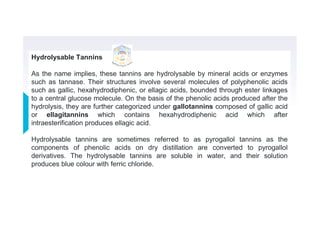The document provides an overview of secondary metabolites, which are organic compounds produced by plants that have pharmaceutical significance but are not essential for their growth. Key groups of secondary metabolites discussed include alkaloids, glycosides, flavonoids, tannins, and volatile oils, along with their classification, properties, and qualitative chemical tests. The document emphasizes the biochemical importance of these compounds and outlines various tests used to identify them.


















































